Human parasites are called every organism that lives at its expense. These are bacteria, fungi, worms. Human parasites are divided into internal and external. The most unpleasant and the largest number of body destruction is helminths - a variety of parasitic worms.
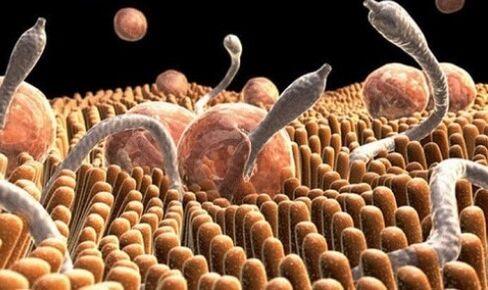
Parasites and human body
Parasitization on the human body can be external or internal. External covers:
- Mosquitoes.
- Leiks.
- Laz.
- Microorganisms that cause scabies.
But there are many more creatures that prefer to settle inside the body. This includes:
- Bacteria.
- Appropriate.
- Helminths.
- Fungal.
The external and internal organization of the parasite belongs to the simplest. Because they do not need to develop for survival, their organization is significantly simplified.
There are many creatures that prefer to settle inside the body. For example, these can be bacteria.
They cannot survive without the host's body, they will not be able to eat their own food. But all of them, almost without exception, very quickly, especially in the right conditions. Where they are not immediately ruled.
Territorial. Some can see everywhere, none of the climate is an obstacle. Others live exclusively in tropical countries, but on the human body they can easily be brought to others. In the body, they also settle in different places.
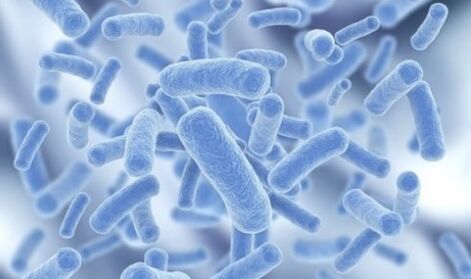
Parasite development cycles are mainly varied of helminths. Some develop first in the ground (biohelminths) and then move into a living being. Others should first develop in the body of any other living thing, but not the person. Third, in an adult, you can go to another or repeat yourself.
It is mistaken to assume that the infection can occur exclusively with dirty hands. Some helminth eggs are viable outside the food for six months and are perfectly attributed to animal wool. Eggs will survive in a dangerous environment - it is valuable to cook meat or fish incorrectly, as whole worms can be paid inside you.
It is valuable to cook meat incorrectly, how the whole nonsense of your worms can be paid inside you.
Human endoparasites
Parasites are divided into endoparasites and ectoparasites. Endoparasites - The one who settles inside, ecto - outside. Endoparasites can settle in almost all internal organs and body tissues. They are divided by localization. Endoparasites are:
- Connect to the external environment of the endoparasites of the internal organs.
They are precisely settled in organs associated with the external environment and not vice versa: the parasitic body is not chosen about "breathing". Such organs include the intestines, a light, human urinary system. These are amoebas, worms and burnt parasitic.
- Parasites.
In human blood. They can live in plasma, white blood cells, red blood cells. These are tranosomes, microfilar or hemosporide.
- Tissue endoparasites.
The endoparasites that choose body tissues with their place of residence. Muscle tissue, brain, cartilage, connective. Even during nerve fibers, tissue endoparasites can be resolved. These are the fins of worms, tranosomes, myxosporide, trichina and others.

Endoparasites can choose the brain according to their place of residence.
Determining the diversity of parasite is very conditional at its localization site. Many species can move to different internal organs, regularly traveling to the body of the owner. The multiplication process can occur in one place, and the organisms are directly and fed into another. The place where the parasite is justified and considered as the place of its conditional localization.
Despite the simplification of many parasitic systems, their life cycle is quite difficult.
Throughout life, some species have to be replaced by several owners that may relate to different biological species. Others can only save one biological species inside, but they may need intermediate hosts. In one person, they multiply, and in the other they develop and grow. With such a difficult life cycle, their sexual functions have increased significantly. It is necessary to multiply in the parasites of the body quickly and to multiply.
Helminths
There are three main types of helminths that are also called worms. This:
- Nematodes, they are round worms.
- Cestods, tape -shaped endoparazites.
- Trematodes are also known as saucers.
Next, they can be divided into a life cycle and the number of places that pass along that road. There are also three types:
Geo-Shelminths.
"GE" is the earth. These worms begin to exist in earthly soil, only at the stage of ripening they can infect people. They do not need intermediate hosts, the eggs enter the soil with human feces. At the larvae stage, they develop exclusively in the warm season.
Such worms include ascariasis, intestinal ugritsy, unusual and blazos.
The larvae of these parasites can enter the human body through unforeseen vegetables or direct contact with the soil.
Biohelminths.
These are parasitic worms whose stages of life go through several owners. Intermediate hosts can be two or more, depending on the variety of worms. Some parasites alter the person exclusively. Others, before finally falling into the human body, are used by other biological creatures for development.
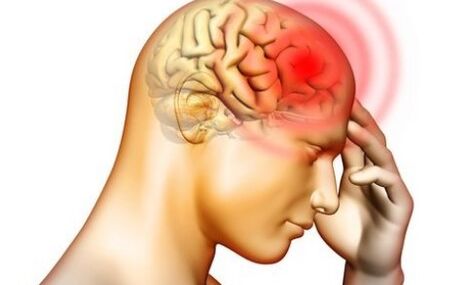
You can infect pets or contact with other people, as well as when consuming semi -soaked meat. Biohelminths include bull tapeworms, echinococcus, wide tape, trichina and others.
Contagioine helminths.
These worms do not need soil or intermediate owners. They go through one body at all stages of their life cycle, very comfortable. The larvae are distinguished directly from the human body when contacting household surfaces and other people are freely spread.
Helmen can live in different organs and systems of the human body, periodically migrating from one part to another.
The list of diseases caused by helminths is very extensive. Find out which parasites live in the body and what treatment can only begin after all types of analysis are necessary to determine all types.
Round worms
The most common in the human environment was round worms, also known as nematodes. In total, there are more than 24, 000 types of nematodes in the world.
They are round because of their shape, which is identified if transverse cutting. The most common human nematodes:
- Ascarids.
- Speakers.
- Trichina.
- Blakoviv.
Helminthic invasion, known as Ascariasis, begins with direct contact with infected gels of soil, or when using unlucky fruits and vegetables. The parasites begin to develop in the intestines, then they enter the circulatory system of the person, from which they go to various internal organs, going into the oral cavity. A person who does not notice this has repeatedly swallowed an adult parasite. They are fed by the remains of unspecified foods. Ascaris waste is extremely toxic. There is no vaccine from ascarioosis, infection can be avoided exclusively by observing personal hygiene rules.
Pinworms infection is called enterobiosis. These are small worms attached to the intestinal walls (5-10 mm). They are fed in the intestinal blood and content. They put the eggs under the skin, out of the anal opening, before the owner sleeps. Due to itching, the mouth comb in the anal region, the larvae fall under the skin and hands, can easily be transferred to other people at home or in public places. Enterobiosis has no painful symptoms, at the initial stage pinworms infection is extremely problematic.
Trichinella, they are trichina, these are round worms that choose an animal or person with their master.
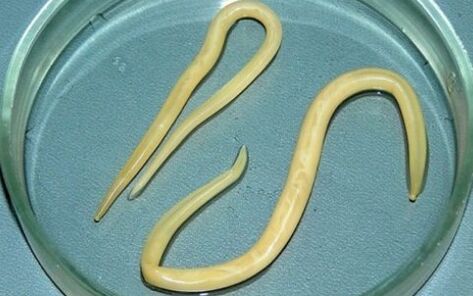
Trichinella is a parasitic worm that affects the human body, which causes a dangerous trichinellosis disease.
They begin to develop in the body in the cross -muscle area, then redirect to the small intestine. In advanced cases of muscle tissue per kilogram, about 15, 000 trichinella eggs can be placed. These parasites can cause a deadly disease called trichinellosis.
The round worms of the Blaoovians are so called because of their appearance. The front part of their body is yarns, it contains one esophagus.
The back is wide, with the remaining internal organs of the parasite. The length of the blazol can reach 50 mm. It feeds on the blood as well as the fluid of the tissue. Causes trichocephalosis disease.
Ribbon worms
There are about 3500 species of well -known stripes in the world, the type of which is also called cestodes. There are no digestive systems in these flat worms, and their diseases that cause them are called cystodosis.
The most common cestodossis:
Cististircosis.
Pork pavement larvae are excited, from contaminated foods, from dirty hands.
The disease affects the skin, bones, internal organs, brain and spinal cord. Most often, parasites are sent to the brain (in 60% of infection cases). It is diagnosed on the basis of the appearance of rounded skin formations. The disease is treated, in the event of a central nervous system infection, prognosis can be unfavorable.
Echinococcosis.
It is localized in the liver, lungs, with many other internal organs. Echinococcus larvae admire the disease. They can develop in a person for several years.
The infection is in contact with animals, collecting berries and fruits, contaminated water consumption. The disease is not so noticeable, it can develop for years and it only occurs by accident.
Alveococcuscosis.
Alveococcosis is caused by alveocococcal worms. The disease is similar to echinococcosis, but is more severe. It affects the lungs and kidneys. Without the treatment of the disease, a fatal outcome is a high likelihood of developing liver failure.
Toniarnchosis.
Tusarinchosis is caused by a bull chain. Parasitizes in the small intestine, developing for 2. 5-4 months. Prognosis is more often favorable for treatment. Parasites can include infected raw or insufficiently treated thermal meat.
Ribbon worms are very fertile. They have the most reduced other sensitivity and there is no digestive system at all. Such parasites cannot develop without the owner.
Vos workers
Supreme are tremontodes. These are flat worms, in the shape of your body that resembles an elongated leaf of the tree.
Some types of trematodes can reach one and a half meters in size.
They appear in the human body, most often with fish or other seafood. About 7200 types of trematodes are known, 40 of them settle in humans and cause trematodes, serious infection caused by infection.
The most common salaries:
Liver bicom.
Globally widespread, it can exist in animals and humans. The cycle of biological life is difficult, the parasite replaces the owners.
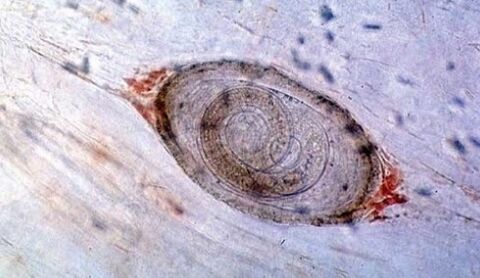
Schistosoma.
Schistosome larvae can penetrate the skin or mucous membranes. The life cycle is difficult, blood is fed. One woman can produce about 3, 000 eggs a day, the fertility of these parasitic worms is very high.
Other liver balmers.
Opisthorchiasis, a helminthic disease that mainly spreads to the liver area. The human body has a toxic effect.
The digestive system of worms is well developed and has sexual and excretion. The rest of the systems are developing poorly. Tremorodes are fed into the blood, epithelial cells, and intestinal contents. They can live almost everywhere: from the liver to the eyes of the conjunctiva.
Other types of endoparasites
The remaining internal parasites are varied with bacteria that cause dangerous diseases, and the simplest microorganisms with them. The fungus, which extends to the human body, also refers to the endoparasite section.
Many beneficial and harmful microorganisms live in the human body. Some of them cause quite dangerous diseases that can lead to death. It is not always possible to immediately recognize the existence of parasitic creatures in themselves, but the early diagnosis of infection gives you a greater chance to finish the cure. If the invasion is suspected, it is advisable to complete a thorough examination by your doctor.


























